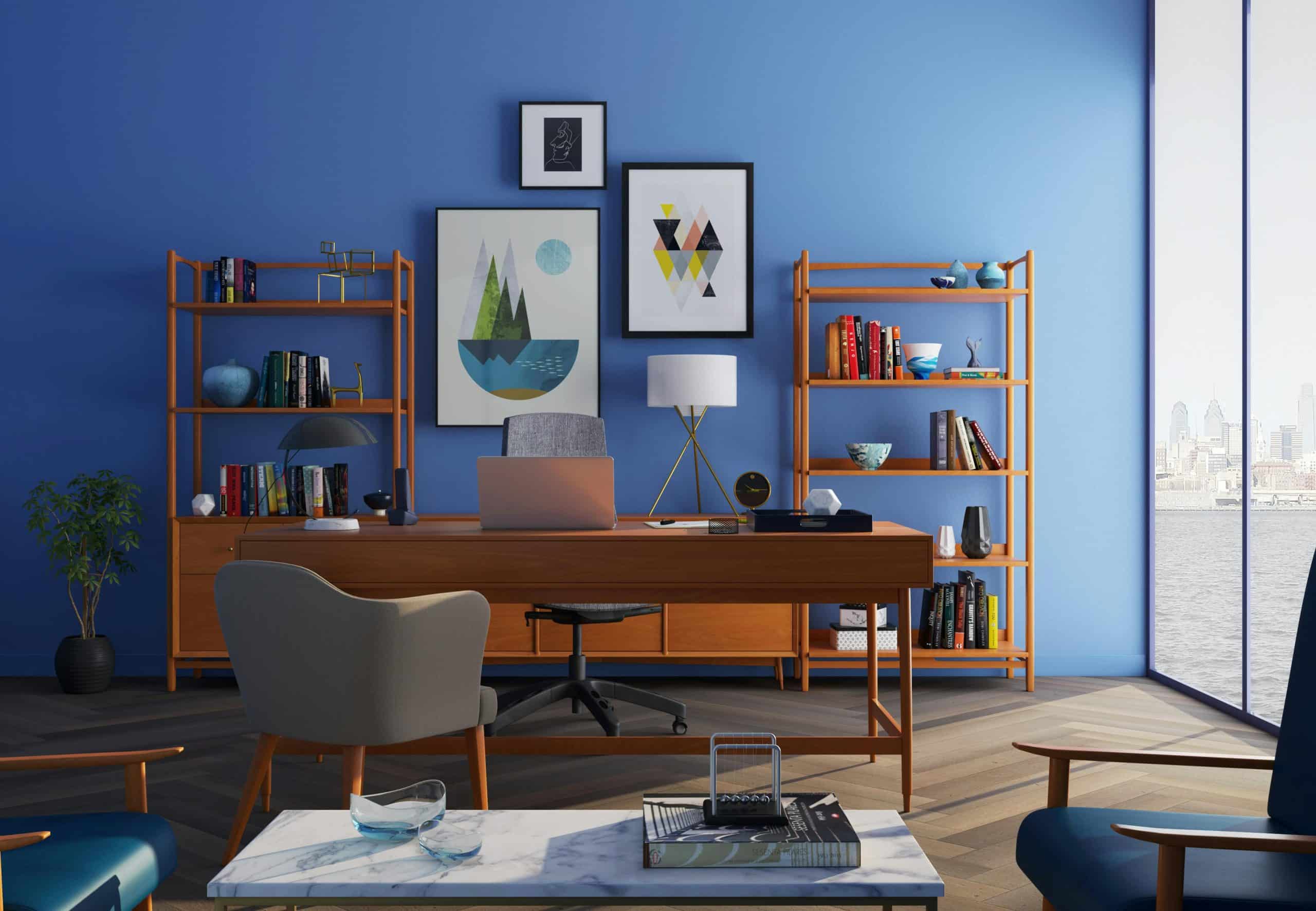In the era of remote work, setting up a comfortable and productive home office is a priority for many people. However, finding the right office furniture that ticks all the ergonomic boxes and fits into a small space can be a daunting task. We bring you a comprehensive guide on how to choose the best ergonomic furniture for your small home office. We’ll delve into different aspects like chair and desk selection, key ergonomic features to consider, and ways to maximize your office space without compromising comfort or breaking the bank.
The Importance of Ergonomic Chairs for Your Home Office
Before we dive into how to choose the perfect ergonomic chair, it’s essential to understand why you need one in the first place. Remember, you will be sitting for extended periods, so your chair plays a critical role in your overall comfort and productivity.
Sujet a lire : What Are the Best Plants for Purifying Air in a Home?
An ergonomic chair supports your back, promotes good posture, and prevents aches and pains that often come with prolonged sitting. Without the right support, you might find yourself battling with back pain, neck discomfort, and other work-related musculoskeletal disorders.
When looking for an ergonomic chair, consider features like adjustable seat height and backrest, lumbar support, sufficient seat depth and width, and a breathable material. Adjustability is vital because it allows you to customize the chair to your body’s specifications. For instance, the best ergonomic chairs will allow you to adjust the height so your feet can rest flat on the floor, with your knees at a 90-degree angle.
Cela peut vous intéresser : What’s the Best Way to Integrate Antique Pieces in a Modern Setting?
Despite the initial price tag, an ergonomic chair is a worthy investment in your health and productivity. It may take some time to find that perfect seat but remember, comfort and support should always be your top priority.
Choosing the Right Desk for Your Small Home Office
Just like your chair, your desk plays a significant role in maintaining good posture and ensuring you’re comfortable while working. An ergonomic desk will provide ample space for your work essentials and allow you to maintain a comfortable and healthy posture.
Height is an essential factor to consider when choosing a desk. A desk that is too high or too low can lead to poor posture and, eventually, discomfort. The ideal desk will align with your elbows when seated, allowing you to work without hunching over or straining your shoulders.
Adjustable desks are an excellent option, especially standing desks that give you the flexibility to switch between sitting and standing. Working while standing for some part of the day can help reduce the risk of obesity, heart disease, and back pain.
If you’re working with a limited space, consider a desk with built-in storage or a compact design that can fit into small corners. The price range for desks is wide, so do your research to find something that meets your needs and falls within your budget.
Ergonomic Add-Ons for Enhanced Comfort
While chairs and desks are the cornerstone of ergonomic office furniture, there are several add-ons that can enhance your comfort and support your productivity.
A footrest, for instance, can provide additional support, especially if your chair or desk is too high. It helps maintain a 90-degree angle at your knees and promotes better circulation.
An adjustable monitor stand is another smart investment. It raises your screen to eye level, reducing the strain on your neck and eyes. When setting up your monitor, the top of the screen should be at or slightly below eye level.
Keyboard and mouse trays that attach to your desk can also help achieve a neutral posture and prevent straining of the wrists.
Remember, these add-ons should complement the overall ergonomics of your home office, rather than act as standalone solutions.
Maximizing Your Small Home Office Space
When dealing with a small space, creativity is your best friend. With a bit of planning and clever furniture choices, it’s possible to create a functional and comfortable workspace, no matter the size.
Opt for furniture that fits the scale of your space. A large, bulky chair or desk might offer comfort, but it will also eat a substantial chunk of your small office. Instead, look for slim, compact designs that don’t compromise on ergonomic features.
Consider using vertical space for storage. Shelves and wall-mounted cabinets can hold your documents and office supplies without taking up floor space.
Lastly, ensure your space has adequate lighting. Good lighting reduces eye strain and can make your small office feel more spacious.
Balancing Price and Quality
While it may be tempting to go for the cheapest options when setting up your home office, remember that you get what you pay for. Low-cost furniture may save you a few bucks now, but it might not provide the comfort, adjustability, and durability that ergonomic furniture offers.
That said, it’s not about buying the most expensive products either. The key is to find a balance between price and quality. Prioritize the furniture that you’ll use the most, like your chair and desk, and invest in high-quality pieces that will last.
Choosing the best ergonomic furniture for your small home office is not a decision to take lightly. Your health, comfort, and productivity are at stake. So take your time, do your homework, and find pieces that are a perfect fit for both you and your space.
Adopting the Sit-Stand Work Routine in Your Small Home Office
Standing desks have gained popularity over the years, and for a good reason. They not only address issues relating to sitting for extended periods but also provide an excellent alternative to the traditional desk setup. When considering ergonomic office furniture, a sit-stand desk is a commendable choice.
A standing desk allows for height adjustability which is essential for achieving an ergonomic workspace. This feature enables you to effortlessly switch between sitting and standing positions throughout your workday, enhancing your comfort and productivity. When standing, ensure the desk height aligns with your elbows to prevent undue stress on your shoulders and wrists.
Sit-stand desks are particularly beneficial for anyone suffering from back pain. Breaking your day into periods of sitting and standing can reduce pressure on your back and promote better posture. Furthermore, studies have shown that standing for part of the day can increase energy levels and improve mood.
In a small home office, having a desk that can double up as both a sitting and standing workspace is a space-saving solution. Consider a desk with a sleek, compact design that doesn’t compromise on its ergonomic features or functionality.
Creating an Ergonomic Home Work Environment
When setting up your small home office, beyond selecting the right ergonomic chair and desk, it’s vital to consider the overall work environment.
Lighting plays a significant role in maintaining a healthy and productive workspace. Poorly lit spaces can cause eye strain and headaches, affecting your productivity. Make sure your office has sufficient natural light during the day and appropriate artificial lighting for evening work hours.
Ventilation is also crucial for a comfortable work environment. Ensure your office space has proper air flow. This can be achieved by opening windows or using a fan or air conditioner.
Lastly, reduce noise distractions as much as possible. If your home office is located in a noisy part of your house, consider using noise-canceling headphones or adding some soundproofing measures.
Remember, an ergonomic home office is not just about individual pieces of furniture. It’s about creating a holistic work environment that enhances your comfort, health, and productivity.
Conclusion
Setting up an ergonomic home office in a small space can seem challenging at first, but with the right approach, it can be achieved effectively. It’s about making smart choices that balance comfort, functionality, and space utilization.
Start with the basics: an ergonomic chair and desk. These are the foundation of your workspace and will significantly affect your comfort and productivity. Don’t overlook the importance of add-ons like monitor stands, keyboard trays, and footrests.
Beyond furniture, consider factors like lighting, ventilation, and noise when setting up your workspace. These elements will contribute to the overall ergonomics of your home office.
Remember, investing in an ergonomic home office is an investment in your health and productivity. So take the time to make informed decisions, prioritize quality over cost, and create a workspace that meets your unique needs. After all, a comfortable and productive work home will make your remote work experience much more enjoyable and successful.






